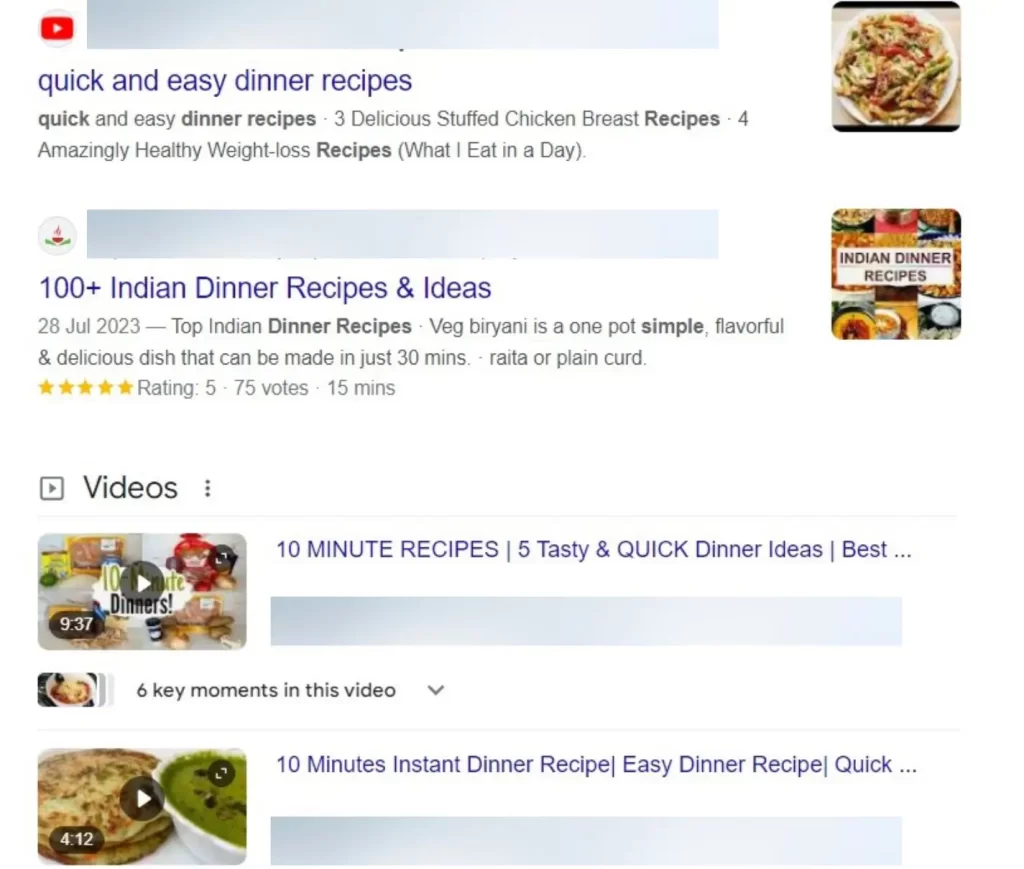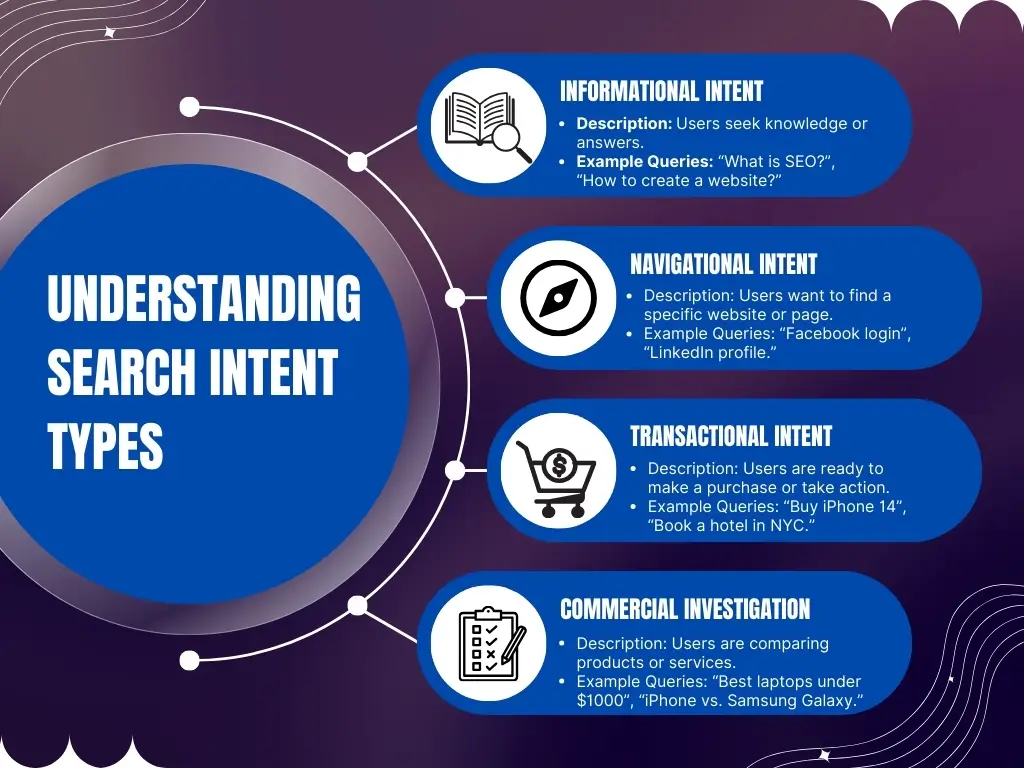What is Search Intent?
Search Intent (also known as User Intent) refers to the primary purpose or objective a user has when entering a query into a search engine. There are four common types of search intent: informational, commercial, navigational, and transactional.
For instance, imagine you’re looking to prepare a quick meal for dinner. You’re pressed for time and need something fast. In this case, you might go to Google and search for “quick recipes for dinner.”

The first result you click on looks OK but suddenly you see a video result that shows 10 minutes instant dinner recipe with 4 minutes duration.
Which is EXACTLY what you’re looking for!
If a lot of people who search for “quick recipes for dinner” like a particular result, it will rank higher in search results.
Types of Search Intent
- Informational: Queries like “What is SEO?” indicate a need for knowledge.
- Navigational: Searches such as “Log in to Gmail” seek specific sites.
- Transactional: Keywords like “Buy iPhone 14” show readiness to make a purchase.
- Commercial Investigation: Terms like “Best gaming laptops” reflect product comparison intent.

Table: Comparison of tools for intent analysis.
| Tool | Key Features | Best For |
|---|---|---|
| Ahrefs | Keyword analysis, backlink data, content ideas | Comprehensive SEO research |
| SEMrush | Keyword difficulty, intent analysis, SERP tools | Tracking and improving rankings |
| Google Analytics | User behavior, session tracking, bounce rates | Understanding audience and behavior |
How to Optimize for Search Intent
Now that we understand the different types of search intent let’s discuss how to optimize for each type.
1. Conducting Keyword Research
Keyword research is the first step in optimizing search intent. By identifying the keywords your target audience is using, you can create content that aligns with their search intent. Use keyword research tools such as Google Keyword Planner or Ahrefs to identify relevant keywords.
2. Analyzing SERPs
Analyzing the search engine results pages (SERPs) is a great way to understand the search intent behind a particular keyword. Look at the content that ranks for your target keyword and analyze how it aligns with search intent.
3. Creating Content that Aligns with Search Intent
Once you have identified the keywords and analyzed the SERPs, you can begin creating content that aligns with search intent. This means providing the user with the information they are looking for in a way that is easy to understand and engaging. Ensure that your content provides value to the user and answers their query.
4. Understanding User Intent and Using it to Inform Content Creation
To create content that aligns with search intent, it’s important to understand your target audience and their needs. Put yourself in their shoes and try to think about what information they would be looking for when searching for a particular keyword. Use this information to create content that meets their needs.
5. Optimizing Content for Featured Snippets
Featured snippets are a great way to increase visibility and drive traffic to your website. To optimize for featured snippets, ensure that your content is structured in a way that is easy for search engines to understand. Use headings, bullet points, and tables to organize your content and make it easier to read.
Best Practices for Optimizing for Search Intent
To optimize for search intent effectively, here are some best practices to keep in mind:
1. Write for the User, Not for Search Engines
Remember that your content is ultimately for human consumption, not just for search engines. Write in a way that is engaging and easy to understand for your target audience.
2. Focus on Providing Value and Answering the User’s Query
Ensure that your content provides value to the user and answers their query. This will help to increase engagement and reduce bounce rates.
3. Use Natural Language and Avoid Keyword Stuffing
Using natural language in your content will help to improve readability and reduce bounce rates. Avoid keyword stuffing, as this can harm your SEO efforts.
4. Use Relevant Visuals and Multimedia
Visuals and multimedia can help to improve engagement and make your content more interesting. Ensure that your visuals and multimedia are relevant to your content.
5. Optimize for Mobile
More and more users are accessing the internet on their mobile devices, so it’s important to ensure that your content is optimized for mobile. Use responsive design and ensure that your website loads quickly on mobile devices.
Advanced Strategies
Semantic SEO
Use LSI (Latent Semantic Indexing) keywords like “content optimization techniques” and “user intent analysis.” These improve contextual relevance.
AI Tools
Leverage tools like ChatGPT or Jasper for quick content recommendations.
Visual Content
Visuals improve engagement. Create infographics and include screenshots of SERPs for real-world examples.
Conclusion
Optimizing search intent is essential for creating content that satisfies the user’s needs and ranks well on search engines. By understanding the different types of search intent and implementing best practices, you can create content that drives traffic to your website and provides value to your target audience.

